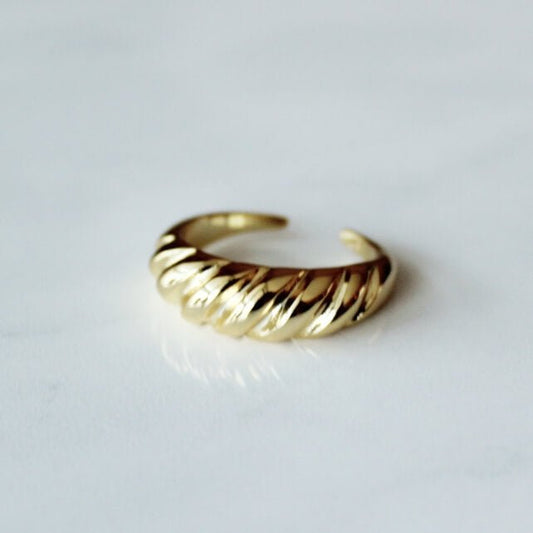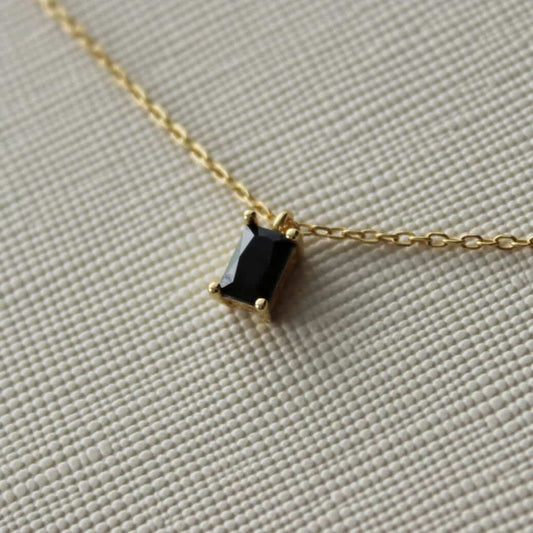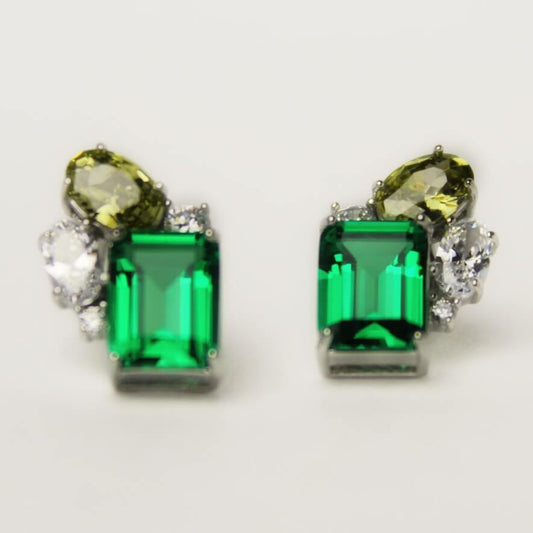Malachite, a captivating gemstone known for its vibrant green hues and distinctive patterns, has gained significant popularity in the world of gem enthusiasts and jewelry collectors. Its unique appearance and historical significance have made it a sought-after gemstone for centuries.
Before delving into the tips for identifying genuine malachite, it is crucial to understand the characteristics and properties of this remarkable gemstone.
What does real malachite look like?
Malachite belongs to the copper carbonate mineral family and is formed through a combination of copper deposits and carbon dioxide in the presence of water. It is commonly found in regions abundant in copper ore deposits, such as Russia, Congo, Australia, and the United States.
One of the remarkable features of malachite is its vibrant green color, which can range from deep forest green to lighter shades with intricate banding or concentric patterns. These patterns, often resembling the concentric rings of a tree, create a mesmerizing effect that enhances the gemstone's aesthetic appeal.
Cultural and historical significance of Malachite stone
In addition to its visual allure, malachite holds historical and cultural significance. Throughout history, it has been used for various purposes, including ornamental carvings, jewelry, and even medicinal applications.
Many ancient civilizations revered malachite for its believed healing properties and considered it a symbol of transformation and protection.
However, due to its popularity and value, malachite has become a target for imitations and synthetic versions. It is crucial for gem enthusiasts and buyers to be able to distinguish real malachite from imitations to ensure they are getting an authentic and valuable gemstone.
So, how do we tell if its real malachite?
The purpose of this blog post is to provide you with helpful tips and insights to identify genuine malachite effectively.
By understanding the key characteristics, conducting visual examinations, and considering other factors, you can become more confident in identifying real malachite and make informed purchasing decisions.
Stay tuned for the upcoming sections where we will delve into the specific guidelines and techniques to distinguish real malachite from imitations. With this knowledge in hand, you'll be well-equipped to appreciate the beauty and authenticity of malachite in your gem collection.
Remember, the journey to become a knowledgeable gem enthusiast starts with understanding the gemstone itself. So, let's dive into the captivating world of malachite and uncover its secrets together.
Description of Malachite's Physical Characteristics

Malachite is a captivating gemstone known for its unique physical characteristics. Its color is typically a vibrant green, ranging from deep forest green to lighter shades resembling the lushness of a spring meadow.
The hue of malachite is often compared to the rich foliage found in nature. This gemstone is recognized for its mesmerizing patterns, which are created by intricate banding and swirling formations.
These patterns, sometimes referred to as "bullseye" or "peacock eye," add to the allure and individuality of each malachite specimen. When it comes to texture, malachite is usually smooth and possesses a glassy or silky feel, making it a delight to touch and behold.
Formation Process and Natural Occurrences
Malachite is formed through a fascinating geological process. It primarily occurs as a secondary mineral in the oxidation zones of copper deposits.
Over thousands of years, copper minerals undergo chemical reactions with water, carbon dioxide, and other elements, leading to the creation of malachite.
This gemstone can be found in various parts of the world, including Africa, Russia, Australia, and the United States. Notable malachite deposits can be found in regions such as the Democratic Republic of Congo, Zambia, and the Ural Mountains in Russia.
Historical Significance and Cultural Uses
Throughout history, malachite has held great significance and has been treasured by different cultures.
In ancient Egypt, malachite was used in the creation of intricate jewelry, amulets, and ornaments. It was associated with fertility, protection, and the power of transformation.
The vibrant green color of malachite was also believed to symbolize rebirth and the cycles of nature. In other cultures, malachite was used for its healing properties, believed to bring harmony, balance, and positive energy.
Factors Affecting Malachite Authenticity
Determining the authenticity of malachite can be crucial for collectors and buyers. Several factors should be considered when assessing malachite's authenticity. One key aspect is the color consistency and intensity. Genuine malachite exhibits a consistent green color throughout its patterns, without abrupt changes or discolorations.
The patterns should also display a natural, flowing arrangement, without any signs of artificial manipulation.
Additionally, malachite's characteristic smooth texture should be present, with no rough or uneven surfaces. Careful examination by experts and consideration of reputable sources are essential in verifying the authenticity of malachite gemstones.
Factors to consider when assessing whether to buy Malachite
Color Variations and Consistency:
Authentic malachite exhibits consistent and uniform green coloration throughout its patterns. Be cautious of abrupt color changes, faded spots, or unusual variations that might indicate synthetic or treated malachite.
Banding Patterns and Swirls:
Malachite is known for its distinctive banding and swirling patterns. Genuine malachite showcases natural, flowing patterns that are not excessively uniform or artificially created. Look for intricate and organic designs that add to the gemstone's uniqueness.
Texture and Surface Features:
The texture of malachite is typically smooth and polished, sometimes exhibiting a glassy or silky feel. Be wary of rough or uneven surfaces, as they may indicate imitations or lower-quality materials. Genuine malachite should have a satisfying tactile experience.
Density and Weight:
Malachite is a relatively dense gemstone. When assessing its authenticity, consider the weight of the specimen in comparison to its size. Authentic malachite will generally feel heavier than imitations or substitutes made from lighter materials.
Reaction to Light and Transparency:
Authentic malachite can exhibit varying degrees of transparency. Hold the malachite under a light source to observe its reaction. It should allow some light to pass through but not be completely transparent. Additionally, natural malachite may display unique patterns and color play when viewed under different lighting angles.
These factors should be carefully considered when examining malachite to ensure its authenticity. It's recommended to seek guidance from gemstone experts or consult reliable sources to further validate the authenticity of a malachite specimen.
Here are step by step instructions to testing Malachite
Step 1: Visual Inspection
Examining Color Variations and Shades of Green: Carefully observe the malachite specimen, noting any variations or inconsistencies in color. Authentic malachite will display a range of green shades with smooth transitions, while unnatural color variations may indicate synthetic or treated malachite.
Analyzing Banding Patterns and Swirls: Study the banding patterns and swirls present in the malachite. Authentic malachite exhibits natural and intricate patterns, showcasing organic flow. Suspiciously uniform or overly perfect patterns might suggest artificial manipulation.
Noting any Inconsistencies or Unnatural Features: During the visual inspection, pay attention to any irregularities or unnatural features. Look out for sharp edges, unnatural textures, or signs of poor craftsmanship, as these could be indicators of imitations.
Step 2: Texture and Feel
Assessing Surface Texture: Gently run your fingers over the malachite's surface to evaluate its texture. Authentic malachite should feel smooth, possibly with a polished or silky texture. Graininess or roughness might suggest imitations or lower-quality materials.
Evaluating Weight and Density: Compare the weight and density of the malachite specimen to known samples of authentic malachite. Genuine malachite tends to be relatively dense and heavier than imitations made from lighter materials.
Step 3: Light and Transparency Test
Holding Malachite Against Light: Hold the malachite up to a light source and observe its translucency or opacity. Authentic malachite will allow some light to pass through but won't be entirely transparent. Note any unique patterns or color play visible under different lighting conditions.
Examining the Stone Under a Magnifying Glass: Inspect the malachite under a magnifying glass for any air bubbles, inclusions, or other irregularities. Authentic malachite typically exhibits natural formations, while imitations may show signs of artificial manufacturing.
Step 4: Chemical Tests (optional)
Acid Test: This test involves using a mild acid (such as diluted vinegar) on a small, inconspicuous area of the malachite to observe its reaction. However, conducting chemical tests requires experience and caution.
Other Tests: Briefly mention additional tests, such as assessing hardness, streak, or fluorescence. These tests may require specialized equipment and expertise.
Remember, it's essential to exercise caution and, if necessary, consult with gemstone experts or professionals to ensure accurate assessment and authentication of malachite specimens.
Conclusion
In conclusion, understanding the key factors that determine malachite authenticity is crucial when evaluating and purchasing this captivating gemstone. By considering color consistency, banding patterns, texture, weight, and light reactions, you can make more informed decisions and confidently identify genuine malachite. Moreover, it is important to remain vigilant, avoid common mistakes, and be aware of potential red flags that may indicate imitations or fake malachite.
Armed with this knowledge, you can make reliable choices when acquiring malachite, whether for personal collection or as a valued addition to your jewelry. So, explore the beauty of malachite, and with a discerning eye, enjoy the authenticity and uniqueness it brings to your gemstone collection. Happy shopping!







